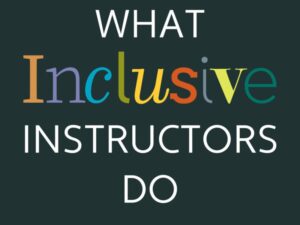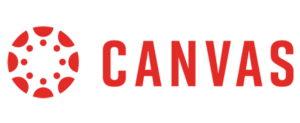 Hopefully, your initial shock of ChatGPT has subsided. Now how to navigate teaching in this brave new world? While an outright prohibition on this technology could quickly devolve into a game of whack-a-mole, there are some things we can do this semester to circumvent nefarious applications of this technology. In his article Embrace the Bot: Designing Writing Assignments in the Face of AI, Eric Prochaska suggests several ways to adjust our assignments to lessen the impact of ChatGPT.
Hopefully, your initial shock of ChatGPT has subsided. Now how to navigate teaching in this brave new world? While an outright prohibition on this technology could quickly devolve into a game of whack-a-mole, there are some things we can do this semester to circumvent nefarious applications of this technology. In his article Embrace the Bot: Designing Writing Assignments in the Face of AI, Eric Prochaska suggests several ways to adjust our assignments to lessen the impact of ChatGPT.
Teaching, Tech, and Tidbits Digest
The posts below are from a bi-weekly digest that encapsulates a range of evidence-based best practices and cutting-edge insights on innovative teaching strategies, effective use of technology, student engagement techniques, and effective assessment, to name a few. The content, diligently curated or crafted by the director Dr. Lew Ludwig, is grounded in robust research and drawn from a wide array of innovative articles, books, and online resources. The goal is to support timely, ongoing faculty development with the most current and impactful knowledge in the field.
Teaching – Take the minute paper to the next level

Many of us use the active classroom technique known as minute paper, which provides an opportunity to quickly assess students’ understanding of the lesson’s main point. Unfamiliar with the practice or want to take it to the next level?
- You can start with this infographic to learn the basics.
- Are you already using the minute paper?
Teaching – Inclusive Teaching Begins with Authenticity

What do you want from your students?
- “I wish they were more engaged in class.”
- “I want them to learn for learning’s sake.”
- “I want them to take ownership over their learning and their time and assignments.”
- “I wish they saw the value of this content in the way I do.”
- “I want more of them to come to office hours and to come more often.”
Tidbit – Searchable active learning activities

Are you looking for some active learning ideas? The Active Learning Library is a free online resource that lets instructors browse over 40 learning activities and filter them according to their goals and interests. For example, instructors can search for activities that provide formative feedback, support small group engagement, build metacognitive skills, or don’t take too long to prepare.
Tech – The BEST of Canvas Feature (it really is!)
The number ONE feature that will make your Canvas course faster to set up and easier for your students to navigate is……..modules. Organizing a course with modules not only helps students stay on track with expectations, but it also can help you keep track of what you are planning for each week, unit, or section of your course.
Teaching I – Take think-pair-share to the next level

Many of us use the active classroom technique of think-pair-share in our classes. This is a core part of my classes. Not familiar with the practice?
- You can start with this infographic to learn the basics.
- Are you already using think-pair-share? Take it to the next level with this infographic.
- Are you a think-pair-share pro? Power up with this infographic that takes think-pair-share beyond the classroom.
Teaching – ChatGBT webinar recording, some resources, and a warning

It was good to see so many attendees at the recent CfLT webinar on ChatGPT by Dr. Tim Lauitano. If you couldn’t attend, you can find a recording here. Please note this is the Denison CfLT YouTube channel, so be sure you are logged into myDenison to access it.
This NYT article – Don’t Ban ChatGPT in Schools.
Teaching- Getting Ready for a New Semester
 |
||
|
Tidbit- The Junk Drawer CV
 |
Tidbit – The Junk Drawer CVI just finished my senior review. After the fact, I realized I forgot to mention a significant activity that slipped off my radar. Had I used a junk drawer CV, I might have caught my error. In Support of the Junk, Drawer CV describes how to create a document that is an easily accessible file tucked in your storage drive to record high points and low points in your career endeavors. |
Teaching- wrapping up this semester, looking to the next
 |
Teaching – wrapping up this semester, looking to the nextAs we wrap up this semester, please take a minute to reflect. Did classes go the way I planned? Are there things I would tweak for next semester? With all the projects, papers, and final exams, it may be time to reconsider late work policies. The Chronicle article, How Instructors Are Rethinking Late Work, may give you some ideas to make next semester’s classes go more smoothly. |

